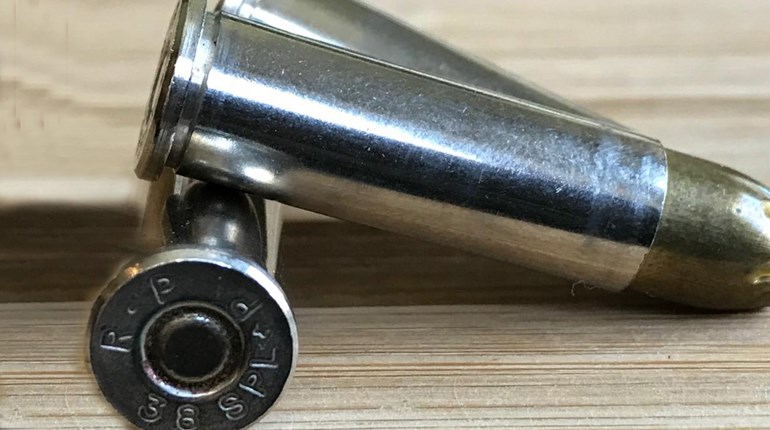
As the ammunition shortage continues, many shooters seek alternate sources of what used to be effortless to find. When conventional places like local gun stores and online retailers don't bear fruit, we must seek alternative measures, like gun shows. You will often find hard-to-find ammunition this way, as well as some terrific deals on quality products. For the most part, the ammo you’ll find at gun shows is the same product that you will find at any other retailer, and the sellers every bit as trustworthy. However, one ought to approach with a "trust but verify" attitude because there are a few people out there looking to make a fast buck off subpar or even dangerous product. Don’t let the tiny percentage of dishonest sellers sway you from events like gun shows, as with a keen eye, you can spot the warning signs and stock up on your favorite range fuel.
A few words on “reloaded ammunition” are in order:
The most common form of sub-par goods is reloaded ammunition. Before I go any further, it's essential to understand that I am not talking about remanufactured ammunition from a known manufacturer. These offerings simply use once-fired brass that has been cleaned and resized, and still retains more than 90% of its usable lifespan. (Many folks don't know that a brass case can be reused as many as 15 times before it must be scrapped, so a reused case in itself is not cause for alarm.) This brass is then put through the same loading process as unused brass and is treated with the same quality control as anything else that leaves the plant. Additionally, carefully prepared amateur handloads can be just as safe and accurate as factory ammunition, if not more. However, that is only true if the rounds were prepared for one specific firearm and by somebody who knows what they are doing.
What to look for:
If you come across a plastic bag of ammunition with a price that's too good to be true, turn your attention to the brass. As it was fired at least once, in most cases, it will have marks from the ejector that look like a rounded dent on the head of the case. Additional giveaways include mixed headstamps, mixed primers or any other non-uniform characteristics. As reloaded ammunition is typically built with a universal bullet seater, look for a ring around the projectile itself, too; it's another viable indicator of a reload and should be your cue to walk away.
Just because ammunition is "factory fresh" doesn't automatically mean it's a good buy, as it might have been damaged during its journey to the table. There are several ways ammo can get damaged, with careless handling by shipping companies the most common. If you are looking down at a great deal on "open boxes" of ammunition, you may want to take a better look before pulling the trigger on it (so to speak).
Look for damaged bullet tips for starters, as these may affect flight and feeding. Even worse can be damaged brass, which can affect headspace and create a dangerous scenario should you get it to chamber. Lastly, one should also be on the lookout for watermarks on the cases, as this is a sign that it was stored improperly or left out in the rain. This is simple to identify, as it presents itself in the form of circular spots of discoloration or the more extreme phases, green or blue corrosion. Water damage can create issues as minor as a misfire to something more serious, such as a case rupture that can damage your gun or injure you.
How to spot counterfeit ammo:
Believe it or not, there is such a thing as counterfeit ammunition. This tactic typically revolves around an item that is banned or might soon be banned. In 2015 when there was a proposed ban on M855/SS109 "Green Tip" 5.56 ammunition, dishonest salesmen painted green tips on less expensive ammunition and passed it off as the real deal. I caught on when, while teaching a course, I noticed one of my students was having trouble with his ammo. Upon inspection I saw that the cases wore the trademark of a company that has never produced this specialized NATO round.
Other methods include packaging less expensive practice-grade ammunition into match-grade packaging, often retrieved from trash cans at public ranges. The bottom line here is to learn as much as possible about your favorite round so that you can quickly identify anything fishy.
This list is far from comprehensive, as many other forms of ammunition fraud still exist. If something seems a little off, just keep on walking down that row and see what the next table has to offer. The magic of the gun show is that you have dozens of retailers willing to let you touch and feel their goods, just a few feet apart from each other. Between careful shopping and a little bit of thoughtfulness, we can easily navigate these price hikes and maintain a practice schedule safely.
For more on ammunition safety, click here!





































